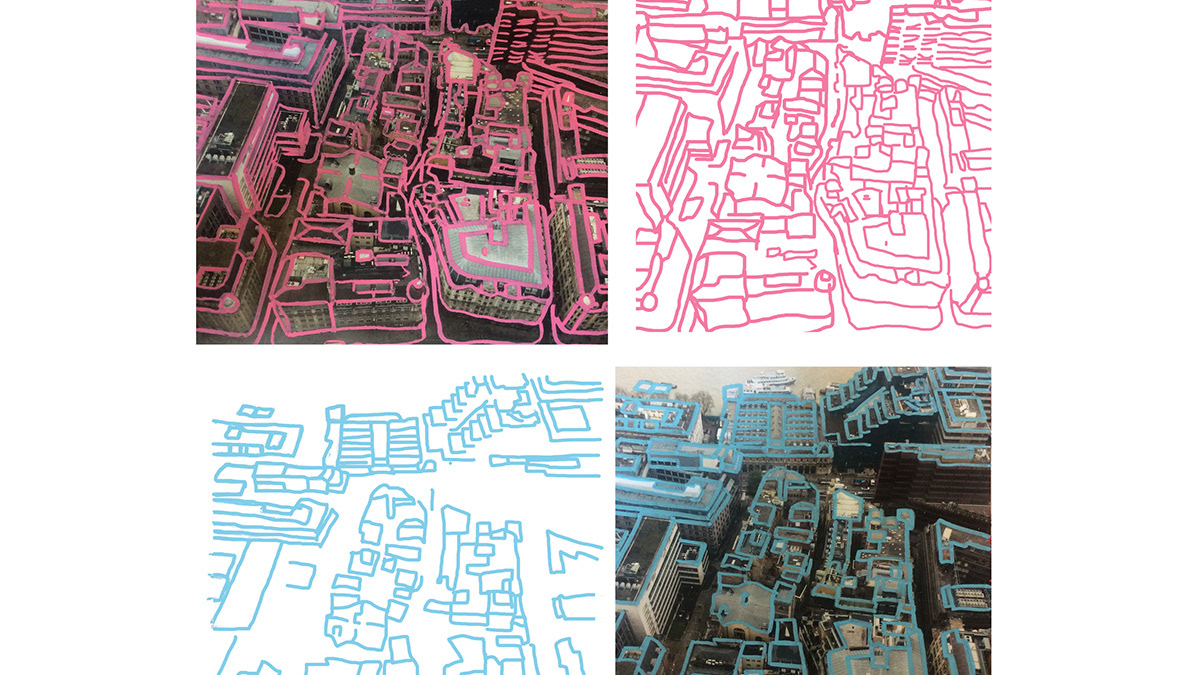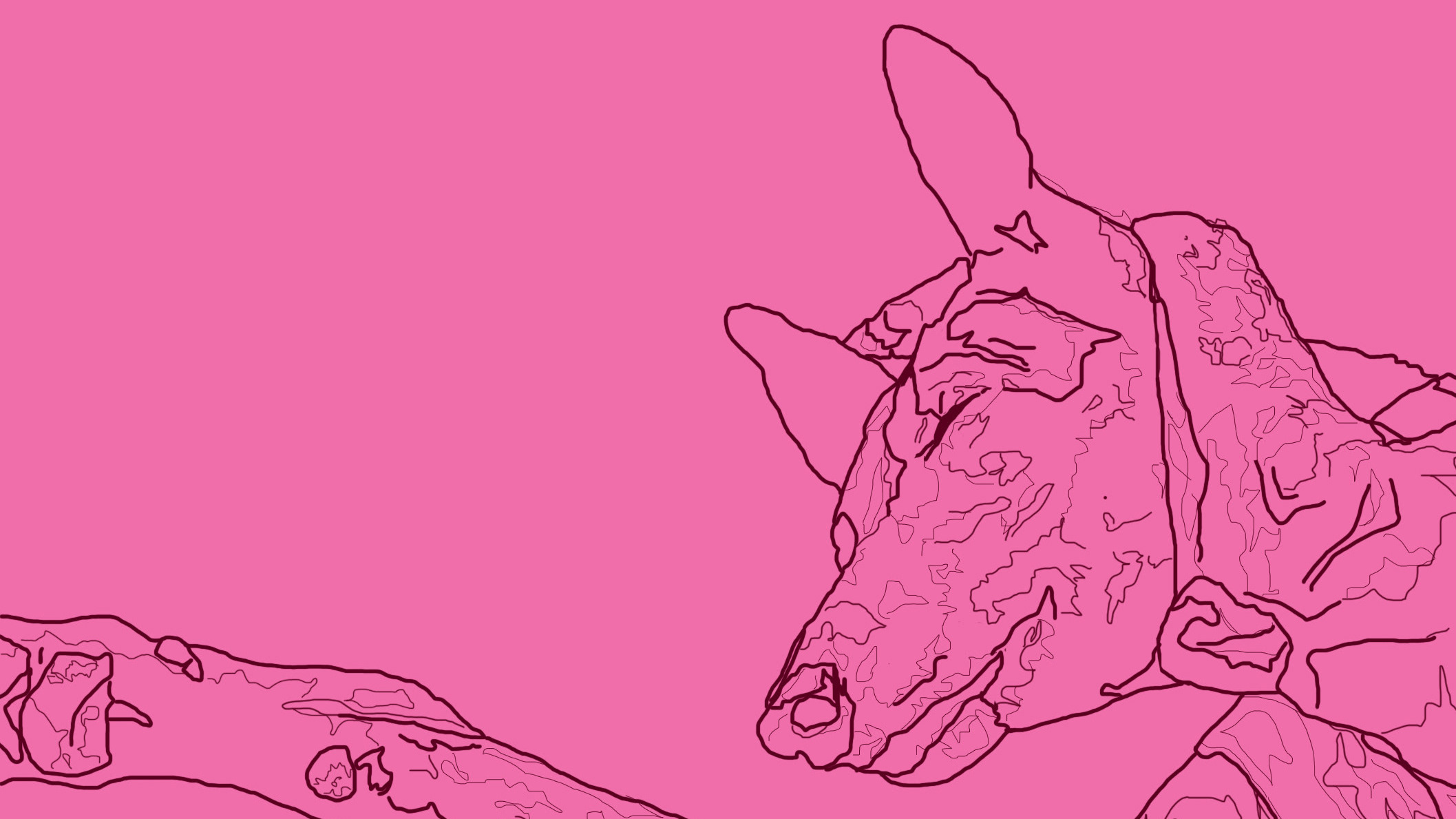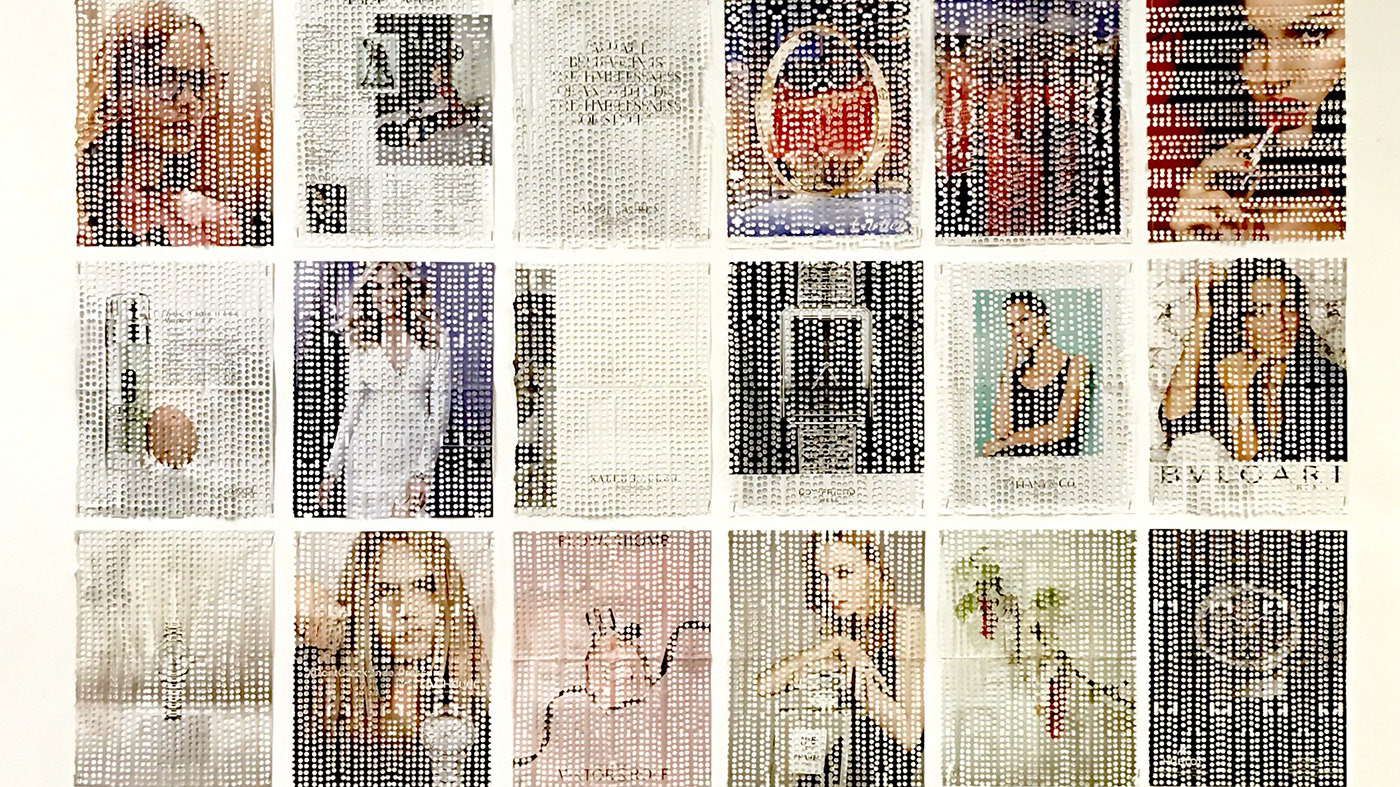While process led work and contradictions have been a constant
in my practice for a long time, the reintroduction of me as a
writer part way through the academic year, brought big changes.
My current work involves a (constantly updating) list of 205
words gathered using a cyclical, reductive process of reading,
listening and rewriting from the source material of a selection of
novels typically considered to be ‘classics’; the current books
being The Picture of Dorian Gray, 1984, Atonement, and The
Great Gatsby.
The cut up technique has been particularly relevant
contextually to this kind of work. Described as a literary collage,
the technique is thought to date back to the 1920s but was
popularised in the 1950s by William Burroughs and Brion Gysin,
who used it to juxtapose various texts together, after starting
with mixing together newspaper articles accidentally when
cleaning up paint. This technique helped me to look at my self
prescribed system of word collection and its outcome from a new
angle and alter my course away from entirely systems based,
alphabetically organised work towards more organic outcomes
that raise issues such as the juxtaposition of human and machine,
and my relationship with the machines I use. Obviously my own
personal subjectivity and emphatic decision making has had an
impact on the selected words that make it through the process of
reduction to the final iteration in a way a computer programme
could not. Another juxtaposition or paradox is that between
random and deliberate decision making within the word choices
and sentence or poem structure.
I have experimented widely with diverse methods of
fabrication and dissemination, including print, publishing,
performance, vinyl transfers and social media, namely Snapchat,
linking to the trend of “millennial pink” a colour which has been
prevalent in many of the works. It is important to mention that I
consider the content of my created texts/poems throughout to be
entirely nonsense and almost irrelevant - I am more interested in
them being understood and interpreted by different audiences in
varying ways, than being understood as products of the process
that created them, to the viewer the process should only be
realised after a thorough examination - if even then.
in my practice for a long time, the reintroduction of me as a
writer part way through the academic year, brought big changes.
My current work involves a (constantly updating) list of 205
words gathered using a cyclical, reductive process of reading,
listening and rewriting from the source material of a selection of
novels typically considered to be ‘classics’; the current books
being The Picture of Dorian Gray, 1984, Atonement, and The
Great Gatsby.
The cut up technique has been particularly relevant
contextually to this kind of work. Described as a literary collage,
the technique is thought to date back to the 1920s but was
popularised in the 1950s by William Burroughs and Brion Gysin,
who used it to juxtapose various texts together, after starting
with mixing together newspaper articles accidentally when
cleaning up paint. This technique helped me to look at my self
prescribed system of word collection and its outcome from a new
angle and alter my course away from entirely systems based,
alphabetically organised work towards more organic outcomes
that raise issues such as the juxtaposition of human and machine,
and my relationship with the machines I use. Obviously my own
personal subjectivity and emphatic decision making has had an
impact on the selected words that make it through the process of
reduction to the final iteration in a way a computer programme
could not. Another juxtaposition or paradox is that between
random and deliberate decision making within the word choices
and sentence or poem structure.
I have experimented widely with diverse methods of
fabrication and dissemination, including print, publishing,
performance, vinyl transfers and social media, namely Snapchat,
linking to the trend of “millennial pink” a colour which has been
prevalent in many of the works. It is important to mention that I
consider the content of my created texts/poems throughout to be
entirely nonsense and almost irrelevant - I am more interested in
them being understood and interpreted by different audiences in
varying ways, than being understood as products of the process
that created them, to the viewer the process should only be
realised after a thorough examination - if even then.





